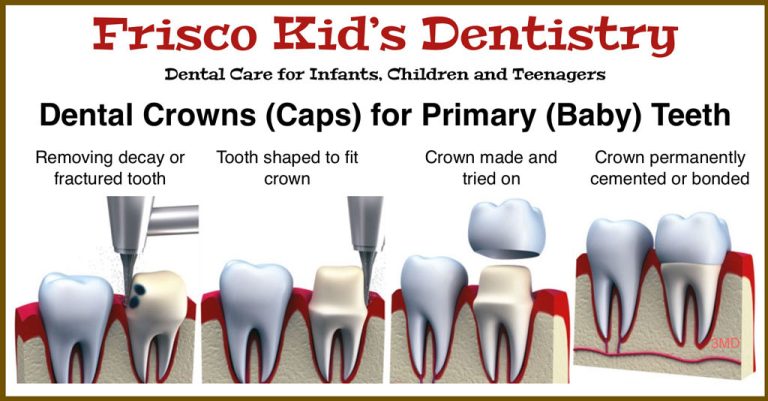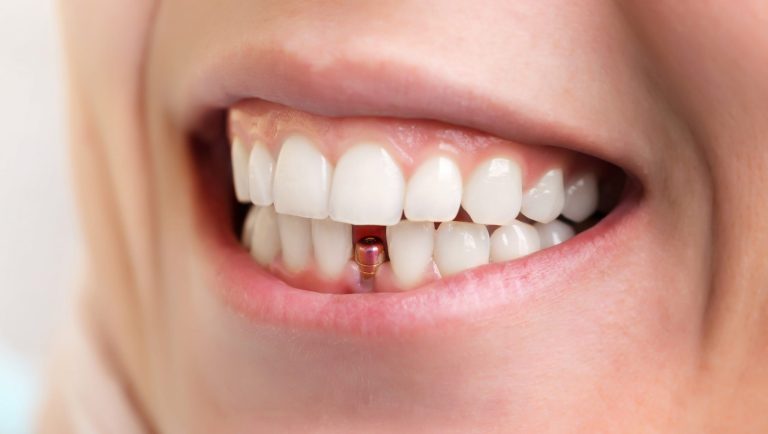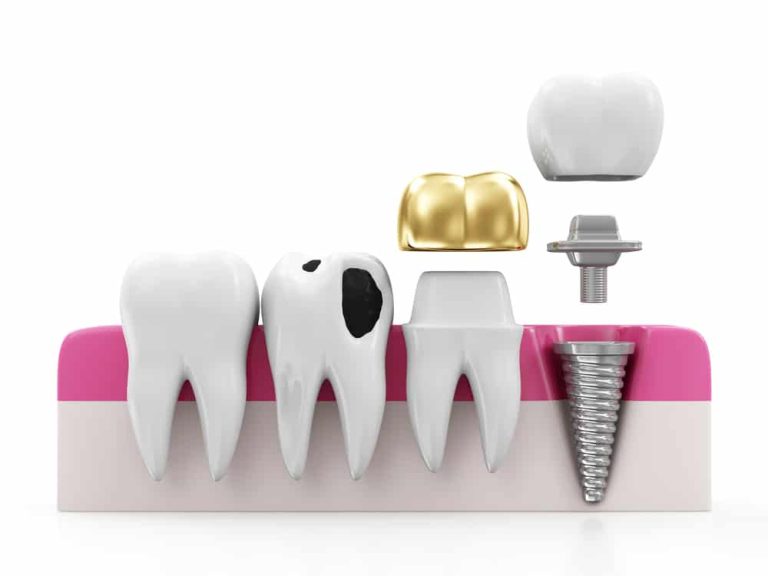Dental Crown Or Filling: Which One Reigns Supreme for Tooth Restoration?
Last Updated on 6 months by DR. ALBIN SIPES
A dental crown or filling is a common dental treatment that repairs and restores the structure and function of a tooth. Dental crowns are used when a significant portion of the tooth is damaged or missing, while fillings are used for smaller areas of decay or damage.
Both options aim to restore the tooth’s integrity and prevent further damage or decay. They provide different levels of coverage, durability, and aesthetics, depending on the specific needs of the patient. Choosing between a dental crown or filling depends on the extent of tooth damage, location, and the dentist’s recommendation after a thorough examination.
Ultimately, the goal is to preserve and enhance the health and appearance of the tooth.
The Benefits Of Dental Crowns
Dental crowns offer superior strength and durability compared to dental fillings. They provide reliable protection for weak or damaged teeth, ensuring their long-lasting functionality. In addition to their strength, dental crowns also enhance the aesthetics of your smile. With their natural appearance, they seamlessly blend in with your other teeth, giving you a confident and beautiful smile.
Whether you have a cracked tooth or a large cavity, dental crowns are a great solution that can restore both the form and function of your teeth. They provide a strong and durable solution that can help you maintain a healthy and attractive smile for years to come.
Types Of Dental Crowns
Dental crowns and fillings are both commonly used to restore damaged teeth. There are different types of dental crowns, including porcelain, metal, and porcelain-fused-to-metal crowns. Porcelain crowns are known for their natural appearance and are often used for front teeth.
Metal crowns, on the other hand, are durable and are typically used for back teeth. Porcelain-fused-to-metal crowns combine the strength of metal with the aesthetics of porcelain. Each type of crown has its own advantages and considerations, which should be discussed with a dentist.
Ultimately, the choice between a dental crown and a filling depends on the extent of the tooth damage and the individual’s oral health needs. It is best to consult with a dentist to determine the most appropriate treatment option.
The Dental Crown Procedure
The dental crown procedure entails several steps. The first step is the examination and preparation of the tooth. After a thorough examination, the tooth is prepared by removing any decayed or damaged parts. Next, an impression is taken to create a custom-fitted crown.
This involves using a mold or digital scanning to capture the exact shape of the tooth. A temporary crown is then placed on the tooth to protect it while the final crown is being fabricated. Finally, the permanent crown is placed and adjusted to ensure a perfect fit and alignment.
Throughout the procedure, the dentist ensures that the patient is comfortable and well-informed. It is essential to follow these steps to maintain good oral health and restore the function and appearance of the tooth.
How Long Do Dental Crowns Last?
Dental crowns and fillings are common solutions for dental restorations. How long a dental crown lasts depends on several factors. The longevity of a dental crown is influenced by the type of material used, the location of the crown in the mouth, the oral hygiene practices of the individual, and any habits such as teeth grinding or clenching.
Dental crowns made of porcelain have a longer lifespan compared to those made of other materials. Crowns placed on molars tend to withstand more biting and chewing forces, reducing the overall lifespan. Proper care and maintenance are crucial to ensure the longevity of dental crowns.
Regular brushing and flossing, along with visits to the dentist for check-ups and cleanings, can help prolong their lifespan. Avoiding habits like chewing on ice or using teeth as a tool can also prevent damage to dental crowns. By following these guidelines, individuals can enjoy the benefits of their dental crowns for many years to come.
Types Of Dental Fillings
Dental fillings are an essential part of maintaining good oral health. There are different types of fillings available, including amalgam fillings, composite fillings, and glass ionomer fillings. Amalgam fillings are made of a combination of metals and are durable and long-lasting.
Composite fillings, on the other hand, are made of a tooth-colored material that blends with the natural teeth. They are aesthetically appealing but may not be as durable as amalgam fillings. Glass ionomer fillings are a mixture of acrylic and glass powder and are commonly used for children and dental fillings in areas with less biting force.
Each type of filling has its own advantages and considerations, and it is important to consult with a dentist to determine the best option for your specific needs. With proper care and regular dental check-ups, dental fillings can help maintain a healthy and beautiful smile.
Pros And Cons Of Dental Fillings
Dental fillings offer several advantages for patients. First, fillings are a cost-effective solution for treating tooth decay. They are less expensive than dental crowns and require less extensive dental work. Fillings also provide a natural appearance, as they are made to match the color of your teeth.
Moreover, the procedure for getting a filling is relatively quick and painless, requiring minimal anesthesia. However, there are some limitations and drawbacks to consider. Dental fillings may not be suitable for larger cavities or teeth with extensive damage. Additionally, fillings may not be as durable as dental crowns and may need to be replaced after a certain period.
It is essential to consult with your dentist to determine the best treatment option based on the specific conditions of your teeth.
Comparing Dental Crowns Vs Dental Fillings For Different Situations
Dental crown or filling, which should you choose? When it comes to comparing dental crowns and dental fillings, several factors need consideration. Firstly, the extent of tooth decay or damage plays a significant role in determining the suitable option. For smaller cavities, dental fillings are often sufficient.
However, for more extensive decay or a significantly damaged tooth, a dental crown might be necessary. The location of the affected tooth is another crucial aspect. Teeth in the back of the mouth that endure more pressure from chewing may require the added strength and durability of a dental crown.
Lastly, aesthetic considerations also come into play. If the affected tooth is visible when you smile, a dental crown can provide a more natural appearance. Ultimately, consulting with your dentist will help determine which option is best for your specific dental situation.
The Cost Factor: Dental Crowns Vs Dental Fillings
Dental crown or filling? The cost factor is a significant consideration when deciding between the two. Dental crowns can have higher costs compared to dental fillings. The price of dental crowns varies depending on factors such as the material used and the complexity of the procedure.
On the other hand, dental fillings are generally more affordable. When it comes to cost, it is essential to note that insurance coverage and financing options may be available to help with the expenses. Insurance policies may cover a portion of the cost, reducing the patient’s out-of-pocket expenses.
Additionally, some dental clinics offer financing plans that allow patients to pay for their treatments through installments. Consider your budget and insurance coverage when deciding between a dental crown or filling.
Making The Decision: Dental Crown Or Filling?
When it comes to deciding between a dental crown or filling, consult with your dentist. Discuss your priorities, such as the appearance and durability of the restoration. Consider your long-term goals for dental health, including the preservation of tooth structure.
Additionally, take your budget constraints into account. Your dentist will provide guidance on the most suitable option for your specific situation. By prioritizing your needs and budget, you can make an informed decision that aligns with your dental health goals.
So, consult with your dentist today to determine whether a dental crown or filling is the right choice for you.
Frequently Asked Questions For Dental Crown Or Filling
How Does A Dental Crown Differ From A Dental Filling?
A dental crown is a cap that covers the entire tooth to restore its shape and function, while a dental filling is used to fill a cavity and restore a smaller portion of the tooth.
When Should I Consider Getting A Dental Crown?
You may need a dental crown if you have a cracked, severely decayed, or weakened tooth. It can also be recommended after a root canal or to enhance the appearance of a misshapen tooth.
Can A Dental Filling Be Used Instead Of A Dental Crown?
In some cases, a dental filling may be sufficient to repair a small cavity. However, if a tooth is extensively damaged, a dental crown is usually the recommended treatment to restore its strength and prevent further damage.
How Long Does A Dental Crown Last Compared To A Dental Filling?
A dental crown generally lasts longer than a filling, with an average lifespan of 10-15 years. On the other hand, a dental filling usually lasts around 5-10 years before needing to be replaced.
Is Getting A Dental Crown A Painful Procedure?
The procedure itself is generally painless as it is performed under local anesthesia. However, some patients may experience slight discomfort or sensitivity after the anesthesia wears off, which can be managed with over-the-counter pain relievers.
Can A Dental Crown Be Done In One Visit?
Depending on the dental office, some dental crowns can be done in a single visit with the help of advanced technology like cerec. However, traditional crown placements usually require two visits, with a temporary crown worn in the interim.
Conclusion
When considering whether to get a dental crown or a filling, it is important to consult with your dentist to determine the best option for your specific situation. Both treatments have their advantages and disadvantages, and the choice ultimately depends on factors such as the extent of damage to the tooth, the location of the tooth in the mouth, and your individual oral health needs.
Dental crowns provide a durable and long-lasting solution for more extensive tooth damage, while fillings are a more conservative approach for smaller cavities. By discussing your concerns and preferences with your dentist, you can make an informed decision that will help restore the health, function, and aesthetics of your teeth.
Remember, regular dental check-ups and proper oral hygiene practices are vital for maintaining the longevity and success of either treatment option.



